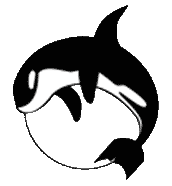Raffee, Liqaa, Al Miqdad, Dania, Alawneh, Khaled, Negresh, Nour, Al Amaireh, Rania, Al Shatnawi, Ali, Alawneh, Retaj and Alawneh, Hassan
2024.
Head and spinal injuries in pediatrics: descriptive study over 10 years in a tertiary hospital.
Cureus: Journal of Medical Science
16
(11)
, e74832.
10.7759/cureus.74832

|
Preview |
PDF
- Published Version
Available under License Creative Commons Attribution. Download (167kB) | Preview |
Abstract
Objectives: Pediatric head and spinal traumas are challenging for healthcare professionals due to their potential for severe consequences. Understanding optimal management methods is crucial to prevent complications and improve outcomes. Head and spinal injuries are common in children, with falls and motor vehicle collisions as the leading causes. Common clinical features include altered mental status, vomiting, and neurological deficits. Primary injuries may involve the scalp, skull, brain, and spinal cord. Severity is classified using the Glasgow Coma Scale (GCS). Methods: This study included pediatric patients (<18 years) presenting to the emergency department with traumatic head or spinal injuries. Data collection included patients' medical history, demographic details, trauma mechanisms, clinical presentations, treatment modalities, and laboratory findings. Results: A total of 303 patients were analyzed, with male patients accounting for 214 (70.6%). Road traffic accidents (RTA) at 147 (48.5%) and falls at 139 (45.9%) were the most common traumas. Blunt injuries predominated, accounting for 292 cases (96.4%). The head was frequently involved 253 (83.5%). Observation was the most common treatment, used in 213 cases (70.3%), followed by intubation in 44 cases (14.5%). The mean GCS was 10.7. Most patients improved during hospitalization which stood at 272 (89.8%), with a mean length of stay of 9.02 days. Spinal trauma cases (14) showed male predominance at 12 (85.7%) and falls were the most common cause at 7 (50%). Conservative management was prevalent at 11 (78.6%), and most cases achieved survival at 13 (92.9%). Conclusions: Prompt diagnosis and management are essential to reduce mortality and morbidity in pediatric head and spinal injuries. Accurate evaluation of injury type, location, and mechanism is crucial for effective treatment. This study highlights the importance of optimal management strategies and emphasizes the need for further research to explore factors affecting mortality and morbidity. Limitations include the small number of spinal injury cases and regional generalization.
| Item Type: | Article |
|---|---|
| Date Type: | Publication |
| Status: | Published |
| Schools: | Engineering |
| Publisher: | Springer |
| ISSN: | 2168-8184 |
| Date of First Compliant Deposit: | 30 January 2025 |
| Date of Acceptance: | 30 November 2024 |
| Last Modified: | 03 Feb 2025 11:37 |
| URI: | https://orca.cardiff.ac.uk/id/eprint/175762 |
Actions (repository staff only)
 |
Edit Item |




 Dimensions
Dimensions Dimensions
Dimensions
 Cardiff University Information Services
Cardiff University Information Services

